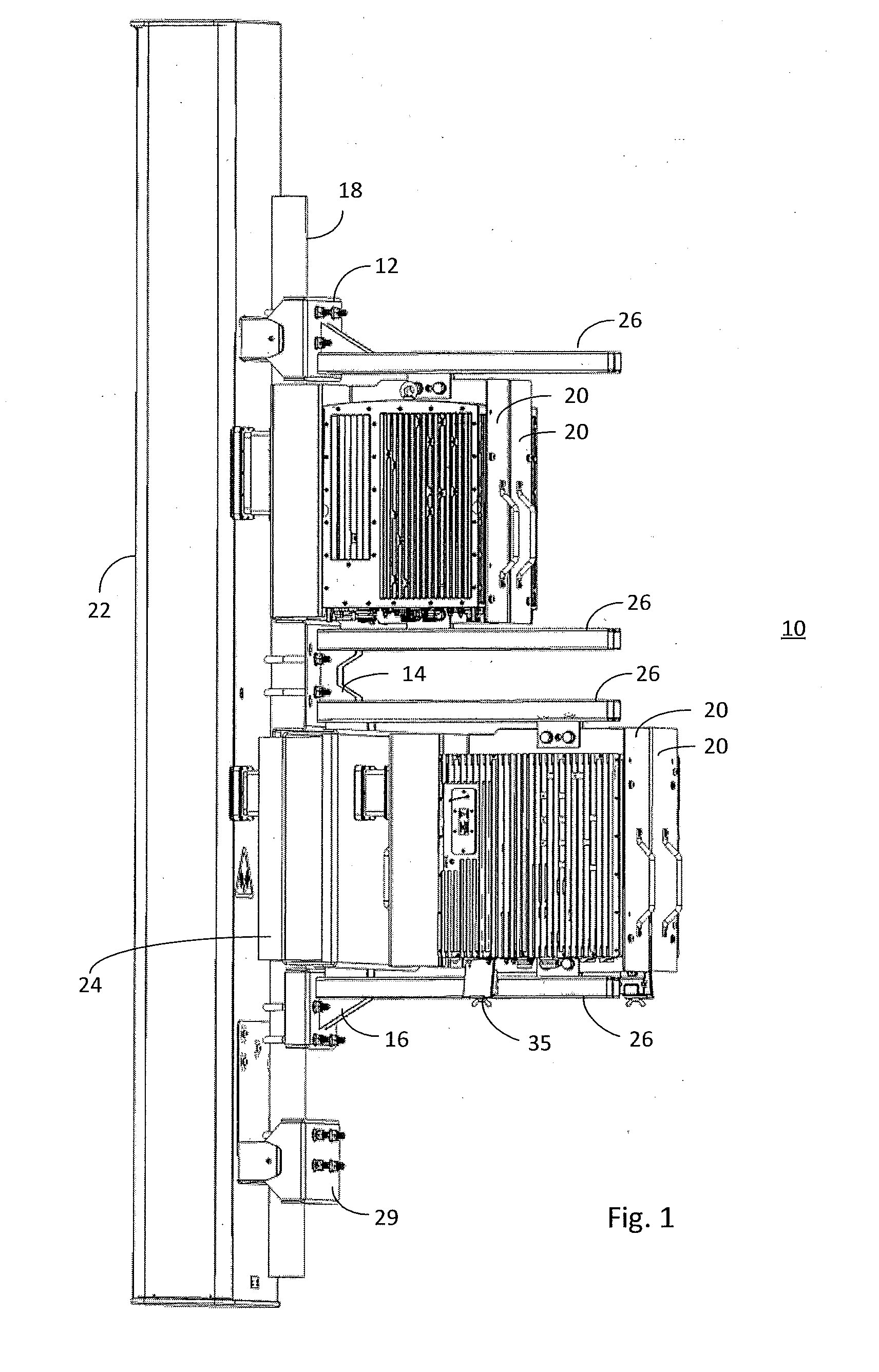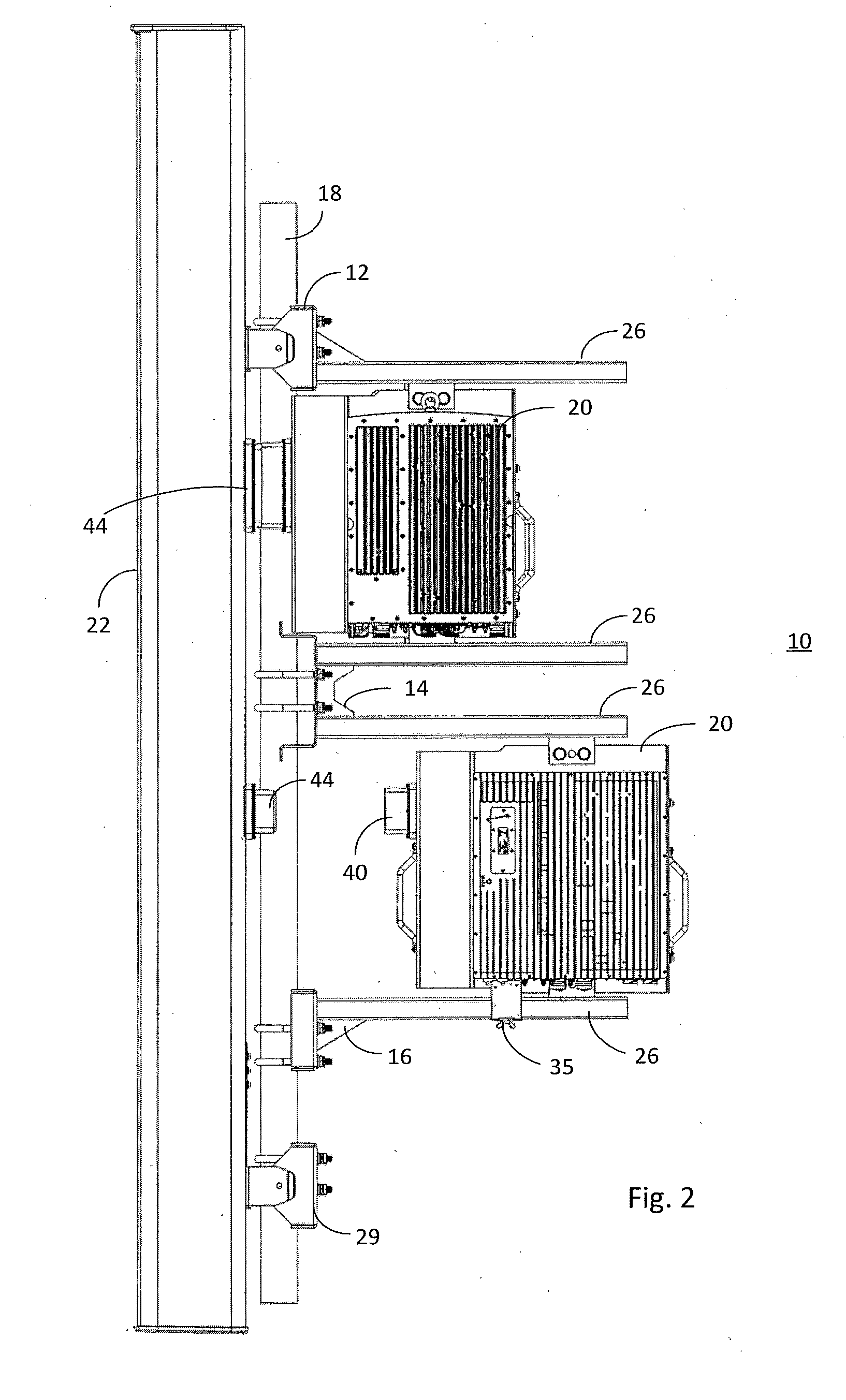Standard Antenna Interface
a technology of antenna interface and standard antenna, which is applied in the direction of antenna details, antennas, electrical equipment, etc., can solve the problems of introducing the opportunity for installation errors, reducing the performance of the radio network, and complex and time-consuming installations
- Summary
- Abstract
- Description
- Claims
- Application Information
AI Technical Summary
Benefits of technology
Problems solved by technology
Method used
Image
Examples
Embodiment Construction
OF THE INVENTION
[0031]A Standard Antenna Interface is described herein to overcome the limitations of a traditional RRH and antenna tower top installation. This invention creates a standard antenna interface that provides a reduced installation time, prevents the installer from directly touching / interfacing with the RF electrical path, creates a PIM free interface, and allows the network operator the flexibility to select any brand of antenna or RRH to install. This solution further enables the stocking of separate antennas and RRH's, thus reducing the cost of inventory. In addition, the higher failure rate RRH's can be replaced independently of the more reliable passive antennas.
[0032]The Standard Antenna Interface comprises of a standard interface structure, including antenna mounting brackets and RRH mounting structure, and a RF interconnection module. The standard interface structure acts as the mounting medium for both the antenna and the RRH. Both the antenna and RRH are mount...
PUM
 Login to View More
Login to View More Abstract
Description
Claims
Application Information
 Login to View More
Login to View More - R&D
- Intellectual Property
- Life Sciences
- Materials
- Tech Scout
- Unparalleled Data Quality
- Higher Quality Content
- 60% Fewer Hallucinations
Browse by: Latest US Patents, China's latest patents, Technical Efficacy Thesaurus, Application Domain, Technology Topic, Popular Technical Reports.
© 2025 PatSnap. All rights reserved.Legal|Privacy policy|Modern Slavery Act Transparency Statement|Sitemap|About US| Contact US: help@patsnap.com



